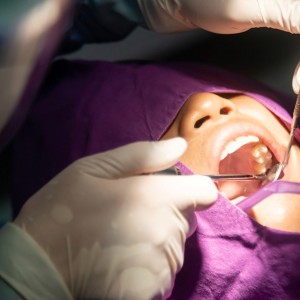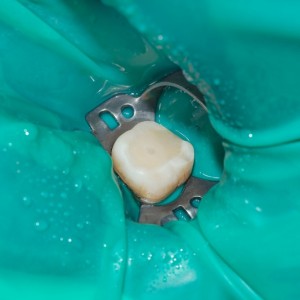
The suture in oral surgery: four different suture materials compared
Lara Figini
Sutures are the most commonly used medical device for wound closure. The main purpose of the suture is to control bleeding in the immediate post-surgery, and to support the tissue until the soft tissue closes and heals, reducing contamination from foreign bodies.
In contemporary oral surgery, good primary healing, achieved through the use of adequate sutures as well as adequate intraoperative soft tissue manipulation, is now considered an absolute imperative to achieve optimal long-term functional and aesthetic results. But what is the best suture?
Materials and Methods
In a clinical study, published in the Clincal Oral Investigation of April 2020, the authors compared four different suture materials, investigating their influence on wound healing, microbial adhesion, tissue reaction and other relevant clinical parameters.
A total of 32 patients undergoing surgical extraction of four third molars were considered in this study. Clinical parameters were evaluated during the intervention and during the follow-up visits. The quality of soft tissue healing around the sutures was assessed on day 3 and day 7 after surgery. Microbial colonization was examined by qPCR. A histological analysis was also conducted to evaluate the inflammatory reaction of the tissues around the sutures.
Results
Significantly better soft tissue healing was found around monofilament sutures and synthetic sutures compared to multifilament and natural sutures. Soft tissue healing was significantly better in all sutures on day 7 compared to day 3 after surgery.
Conclusions
From the data emerging from this study, which must be confirmed in other similar studies, it can be concluded that the non-resorbable polypropylene suture has superior clinical characteristics among all sutures. Around this type of suture there is improved soft tissue healing and minimal inflammatory reaction. The worst soft tissue healing occurs around non-absorbable silk sutures. This suture elicits the most intense inflammatory reaction, showing the greatest bacterial adhesion compared to alternative sutures.
For additional information: Comparison of four different suture materials in respect to oral wound healing, microbial colonization, tissue reaction and clinical features-randomized clinical study.
 Related articles
Related articles
Oral surgery 27 October 2025
The authors assessed the incidence of postoperative bleeding in patients who were highly anticoagulated and in patients who underwent extensive oral surgical procedures and who continued using oral...
Endodontics 05 October 2025
Regenerative endodontic procedures (REPs) associated with apical surgery could represent an alternative treatment strategy for patients whose teeth present incomplete root formation and extensive...
Implantology 02 October 2025
Proper implant treatment planning remains the first priority for implant success. Dental imaging is an important tool to accomplish this task.
Oral surgery 05 September 2025
Fentanyl, a short-acting synthetic opioid, has a pharmacokinetic profile suited to fast relief of brief episodic pain.
Oral surgery 22 August 2025
Thiel embalming technique: a valuable method for teaching oral surgery and implantology
Because of its high requirements on surgical experience and the need of complete understanding of the anatomy, oral surgery and especially implantology belong to the most demanding procedures in...
 Read more
Read more
Much like EMTs rushing to the scene after an accident, stem cells hurry to the site of a skull fracture to start mending the damage. A new finding has uncovered the signaling mechanism that triggers...
Products 05 November 2025
SimplyTest has launched a groundbreaking saliva-based test to detect high-risk strains of oral human papillomavirus (HPV), a major cause of oropharyngeal cancers.
News 05 November 2025
Perimetrics, Inc., a dental technology company pioneering quantitative diagnostics, announced today that the U.S. Food and Drug Administration (FDA) has granted clearance for the InnerView...
News 05 November 2025
On October 15, open enrollment for Medicare began nationwide. Hundreds of thousands of seniors in New Jersey will once again face the challenge of finding the right Medicare coverage, including the...
Digital Dentistry 04 November 2025
Digitalisation is an expanding field in dentistry and implementation of digital teaching methods in dental education is an essential part of modern education.















